Cupping Therapy : An Introduction
Cupping refers to an ancient Chinese practice in which a cup is applied to the skin and the pressure in the cup is reduced (by using change in heat or by suctioning out air), so that the skin and superficial muscle layer is drawn into and held in the cup. In some cases, the cup may be moved while the suction of skin is active, causing a regional pulling of the skin and muscle (the technique is called gliding cupping)
The specific origin of Cupping Therapy remains in obscurity – the consensus is that the action of suction has been part of therapeutic efforts throughout human history, migrating with human tribes along migratory routes. These ancient cultures used hollowed out animal horns, bones, bamboo, nuts, seashells and gourds to purge bites, pustules, infections and skin lesions from the body, and many are still in use today. Ancient healers also used Cupping devices to draw evil spirits out of the body and to balance the humors. Earthenware and metal were fashioned into Cupping vessels before the development of glass
Treatment Plans
- Trauma & intensive care $59
- Aged Care $29
- Community Services $25
- Diagnosis & Investigation $48
- Medical & Surgical $82
- Mental Health $74
- Rehabitation $24
- Specialised Support Service $19
- Trauma & intensive care $59
- Aged Care $29
- Community Services $25
- Diagnosis & Investigation $48
- Medical & Surgical $82
- Mental Health $74
- Rehabitation $24
- Specialised Support Service $19
What is Cupping Therapy ?
Cupping therapy is an ancient Chinese form of alternative medicine in which a local suction is created on the skin; practitioners believe this mobilizes blood flow in order to promote healing.[1] Suction is created using heat (fire) or mechanical devices (hand or electrical pumps). It is known in local languages as Meyboom, baguan / baguar, badkesh, banki, bahnkes, bekam, buhang, bentusa, kyukaku, giáchơi, Hijamah, kavaa (ކަވާ), mihceme, and singhi among others.
Through either heat or suction, the skin is gently drawn upwards by creating a vacuum in a cup over the target area of the skin. The cup stays in place for five to fifteen minutes. It is believed by some to help treat pain, deep scar tissues in the muscles and connective tissue, muscle knots, and swelling.
There is reason to believe the practice dates from as early as 3000 B.C.; the earliest record of cupping is in the Ebers Papyrus, one of the oldest medical textbooks in the world, describes in 1550 B.C. Egyptians used cupping. Archaeologists have found evidence in China of cupping dating back to 1000 B.C. In ancient Greece, Hippocrates (c. 400 B.C.) used cupping for internal disease and structural problems. This method in multiple forms spread into medicine throughout Asian and European civilizations.
History Of Cupping Therapy
Cupping Therapy, commonly referred to as Cupping, has been around for thousands of years. It developed over time from the original use of hollowed out animal horns (the Horn Method) to treat boils and suck out the toxins out of snakebites and skin lesions. Horns slowly evolved into bamboo cups, which were eventually replaced by glass. Therapeutic applications evolved with the refinement of the cup itself, and with the cultures that employed cupping as a health care technique.
The true origin of cupping still remains uncertain to this day. Some consider the Chinese to be responsible for cupping, however, the earliest pictorial records date back to the ancient Egyptians around 1500 B.C. Translations of hieroglyphics in the Ebers Papyrus, the oldest medical text book, detail the use of cupping for treating fever, pain, vertigo, menstrual imbalances, weakened appetite and helping to accelerate the healing crisis.
From the Egyptians, cupping was introduced to the ancient Greeks, where Hippocrates, the Father of Modern Medicine and cupping advocate, viewed cupping as a remedy for almost every type of disease. In fact, other Greek physicians used the strong suction of cupping to restore spinal alignment by reducing dislocated vertebrae from protruding inward.
The earliest recorded use of cupping came from the famous alchemist and herbalist, Ge Hong (281-341 A.D.), who popularized the saying “Acupuncture and cupping, more than half of the ills cured.”
The Chinese expanded the utilization of cupping to include its use in surgery to divert blood flow from the surgery site. In the 1950’s, after much extensive research, a collaborative effort between the former Soviet Union and China confirmed the clinical efficacy of cupping therapy. Since then, cupping has become a mainstay of government-sponsored hospitals of Traditional Chinese medicine.
Eventually, cupping spread to ancient cultures in many countries of Europe and even the Americas. Throughout the 18th century, European and American doctors widely used cupping in their practices to treat common colds and chest infections, often in the form of Wet Cupping. Wet Cupping, also known as Artificial Leeching and Hijamah in Muslim societies, is where the practitioner makes tiny incisions in the skin to dredge the blood or poisons out.
By the late 1800’s,cupping lessened in popularity and was severely criticized and discredited by the newly established scientific model of medicine. The new model defined medicine by making the body transparent, focusing on and treating the inside, in preference to the outside. Since cupping was a surface treatment, it was inconsistent with this new medical paradigm, which had shifted away from hands-on manipulative therapies.
Decades flew by as cupping therapy gradually became reduced to a mere curiosity of the past, collecting dust on practitioners’ shelves. In 2004 Cupping re-emerged as a hot new celebrity trend in the lime light of a New York film festival, where actress Gwyneth Paltrow’s back revealed her fresh cupping marks. Countless celebrities like Jennifer Aniston, Victoria Beckham and Denise Richards followed suit and became fast adopters of this hot new cupping trend. Unfortunately, some of the Hollywood buzz viewed the celeb’s cupping marks as simply bruises and rolled their eyes at its potential benefits.
Until recently, there was scant published evidence in favor of cupping for pain relief. Over the past three years however, a handful of new studies have shown it helps relieve back, neck, carpal tunnel and knee pain. One thing is certain, and that is cupping is a powerful healing modality that can complement many healthcare modalities ranging from spa treatments to medical massage and physical therapy.
Ancient Cupping Equipment

MethoA Brief History of Cupping
Way back in time, long before any historical or archeological evidence had been uncovered to support the application of cupping instruments to the body as a therapeutic procedure, prehistoric humans relied in part on their ability to suck and draw to the surface any irritations such as stings and thorns. Early humans also developed conceptualizations concerning their place in nature and the universe and the causes of ill health.
In their efforts to explain sickness, they held beliefs about that which could enter the body or mind such as evil spirits and cause pain and suffering. Many researchers including anthropologists have described how healers of these super naturalistic traditions of illness causation applied oral suction to the surface of the body to withdraw the effects of these malevolent influences.
The Horn Method
In time, various natural resources began to be used to effect suction – which makes good sense because indigenous groups could exploit their natural resources. For example, natives along the west coast of North America, in the vicinity of Vancouver Island, used shells. In Europe, Asia, Africa and North America, hollow animal horns were fashioned to provide an effective cupping device. In North America, the natives made their cupping implements by slicing off the point of a buffalo horn. They would then place the base of the horn on the body and suck the air out through the opening at the tip. When a vacuum was achieved, a wad of dried grass would be immediately thrust into the opening by the nimble workings of the tongue. By this method the medicine men, with their powerful facial muscles and considerable agility, can make a very successful job of cupping. (Brock bank,1987:22). Another technique used to withdraw disease was by sucking through a bone tube. During the Babylon – Assyrian Empire (stretching from Iraq to the Mediterranean) massage was practiced as well as ‘cupping by sucking, with the mouth or by using a buffalo horn’ (Mettler, 1947:320). The source of this information was presumably found inscribed on clay tablets, written in one of the earliest written languages, i.e. Cuneiform script around 700BC.
Hippocrates and The European Traditions of Cupping
Textual evidence on cupping can be found in the writings of Hippocrates (C.460-377 BC), known as the Father of Modern Medicine. During this golden era of the early Greek state, Hippocrates and his followers were devoted to an empiric approach to healing and sought naturalistic explanations why people became ill. They thoroughly rejected causes like spirits or ghosts, and instead reasoned that poor diet, insufficient exercise, exposure to adverse weather, an unbalanced lifestyle and emotional factors were the chief agents of ill health. In his guide to clinical treatment, Hippocrates recommended cupping for the treatment of angina, menstrual irregularities and other disorders.
In the 1800’s, the British cupper Samuel Bayfield (1839: 51-52), wrote: “Hippocrates was a minute observer, and has left us some striking remarks on the shape and application of the cups. He recommends that they should be small in diameter, conical in shape, and light in their weight, even when the disease for which they are applied is deeply seated”.
Cupping refers to an ancient Chinese practice in which a cup is applied to the skin and the pressure in the cup is reduced (by using change in heat or by suctioning out air), so that the skin and superficial muscle layer is drawn into and held in the cup. In some cases, the cup may be moved while the suction of skin is active, causing a regional pulling of the skin and muscle (the technique is called gliding cupping).
This treatment has some relation to certain massage techniques, such as the rapid skin pinching along the back that is an important aspect of tui na (12). In that practice, the skin is pinched, sometimes at specific points (e.g., bladder meridian points) ,until a redness is generated. Cupping is applied by acupuncturists to certain acupuncture points, as well as to regions of the body that are affected by pain (where the pain is deeper than the tissues to be pulled). When the cups are moved along the surface of the skin, the treatment is somewhat like gua sha (literally, sand scraping), a folk remedy of southeast Asia which is often carried out by scraping the skin with a coin or other object with the intention of breaking up stagnation. Movement of the cups is a gentler technique than gua sha, as a lubricant allows the cup to slide without causing as much of the subcutaneous bruising that is an objective of gua sha. Still, a certain amount of bruising is expected both from fixed position cupping (especially at the site of the cup rim) and with movement of the cups.
Traditional cupping, with use of heated cups, also has some similarity to moxibustion therapy. Heating of the cups was the method used to obtain suction: the hot air in the cups has a low density and, as the cups cool with the opening sealed by the skin, the pressure within the cups declines, sucking the skin into it. In this case, the cups are hot and have a stimulating effect something like that of burning moxa wool.
In some cases, a small amount of blood letting (luoci; vein pricking) is done first; using a pricking needle, and then the cup is applied over the site. The pricking is usually done with a three-edged needle, applied to a vein, and it typically draws 3–4 drops of blood (sometimes the skin on either side is squeezed to aid release of blood). A standard thick-gauge acupuncture needle or plum blossom needle may be used instead. This technique is said to promote blood circulation, remove stasis, and alleviate swelling and pain. It is employed especially when there is a toxic heat syndrome and for a variety of acute ailments.
Early History
The earliest use of cupping that is recorded is from the famous Taoist alchemist and herbalist, Ge Hong (281–341 A.D.). The method was described in his book A Handbook of Prescriptions for Emergencies, in which the cups were actually animal horns, used for draining pustules. As a result of using horns, cupping has been known as jiaofa, or the horn technique. In a Tang Dynasty book, Necessities of a Frontier Official, cupping was prescribed for the treatment of pulmonary tuberculosis (or a similar disorder). More recently, Zhao Xuemin, during the Qing Dynasty, wrote Supplement to Outline of Materia Medica, including an entire chapter on “fire jar qi” (huoquan qi). In it, he emphasized the value of this treatment, using cups made of bamboo or pottery, in alleviating headache of wind-cold type, bi syndrome of wind origin, dizziness, and abdominal pain. The cups could be placed over acupuncture needles for these treatments. One of the traditional indications for cupping is dispelling cold in the channels. This indication is partly the result of applying hot cups. For example, bamboo cups would be boiled in an herbal decoction just prior to applying to the skin (this is one type of shuiguanfa, or liquid cupping, so-called because a liquid is incorporated into the treatment). Both liquid cupping and cupping over an acupuncture needle are favored for treatment of arthralgia. Cupping also is thought to dispel cold by virtue of its ability to release external pathogenic factors, including invasion of wind, damp, and cold.
Modern Cupping
During the 20th century, new glass cups were developed. Common drinking glasses have been used for this purpose, but thick glass cupping devices have also been produced and are preferred. The introduction of glass cups helped greatly, since the pottery cups broke very easily and the bamboo cups would deteriorate with repeated heating. Glass cups were easier to make than the brass or iron cups that were sometimes used as sturdy substitutes for the others; further, one could see the skin within the cup and evaluate the degree of response.
The glass cups are depressurized by providing some fire in the cup to heat up the air within just prior to placement. For example, hold a cotton ball dipped in alcohol with a pincer, ignite it, hold it in the cup, then rapidly apply to the skin; this is called shanhuofa (flash-fire cupping; see Figure 2). Sometimes, a small amount alcohol is put in the cup and lit; this method is called dijiufa (alcohol-fire cupping).
At the end of the 20th century, another method of suction was developed in which a valve was constructed at the top of the jar and a small hand-operated pump is attached so that the practitioner could suction out air without relying on fire (thus avoiding some hazards and having greater control over the amount of suction). Both glass and plastic cups were developed, though the plastic ones are not very well suited to moving along the skin once in place, as the edges are not entirely smooth and the strength of the cups is limited. The modern name for cupping is baguanfa (suction cup therapy).
In order to allow easy movement of the glass cups along the skin, some oil is applied. Medicated massage oils (with extracts of herbs) are particularly useful for this purpose. Since the cups are applied at room temperature, the indication of removing cold from the channels is no longer as applicable, at least to stationary cups. There is some friction generated with moving cups, so that there is a small but significant amount of heat applied by that method, especially if a warming oil is used as lubricant.
Generally, the cup is left in place for about 10 minutes (typical range is 5–15 minutes). The skin becomes reddened due to the congestion of blood flow. The cup is removed by pressing the skin alongside it to allow some outside air to leak into it, thus equalizing the pressure and releasing it. Some bruising along the site of the rim of the cup is expected.
Today, cupping is mainly recommended for the treatment of pain, gastro-intestinal disorders, lung diseases (especially chronic cough and asthma), and paralysis, though it can be used for other disorders as well. The areas of the body that are fleshy are preferred sites for cupping. Contraindications for cupping include: areas of skin that are inflamed; cases of high fever, convulsions or cramping, or easy bleeding (i.e., pathological level of low platelets); or the abdominal area or lower back during pregnancy. Movement of the cups is limited to fleshy areas: the movement should not cross bony ridges, such as the spine. Following are some of the recommended treatment sites for various disorders.
Cupping Benefits
Cupping with Buddha Traditional Chinese medicine such as cupping therapy has been around for thousands of years and has been used to treat patients across many different cultures. In the modern world, studies conducted by scientists in 2012 have shown that when combined with other forms of treatment such as acupressure, acupuncture and medication, cupping could benefit many patients suffering from a number of ailments.
Chinese Cupping is based on the belief that by creating vacuums using cups on specific points of a patient’s body, the life force within that person’s body can be restored to its equilibrium and cure illnesses. All obstructions, pain and inflammations are removed to promote a sense of peace and well-being. Cupping promotes blood flow and calms the nervous system while improving blood circulation. It is a widely recognized form of traditional Chinese medicine.
Traditional Chinese medicine originated in China and has been evolved over the years and is used by several different cultures. Cupping is a form of traditional Chinese medicine and therapy that has been adopted by many cultures for different reasons and is known to be used in addition to other alternative Chinese medicines such as acupuncture and tai chi.
These traditional Chinese medicines are used to help treat and prevent certain health conditions and ailments. They are used instead of traditional medicine as a more natural and non-invasive technique and treatment to help heal and prevent future health problems.
A great cupping experience starts with a quality cupping set.
It has been said that the Chinese cupping method was also used by the Prophet Muhammad. The cupping method, also known as hijama therapy in the Arabic culture, was used to provide pain management and detoxify the body. The Prophet Muhammad regarded cupping therapy as a highly recommended and integral element of Islamic Prophetic Medicine.
The Prophet Muhammad has been reported to use cupping therapy for the treatment of pain and also used this therapy for health maintenance and prevention. Hijama therapy adhered to guidelines on when it was best to practice this technique. Hijama was usually only performed on the odd days of the Lunar Calendar. These days included Monday, Tuesday, and Thursday. The Prophet Muhammad advised against the cupping method on other days of the week.
While the most ancient accounts talk about healing pulmonary tuberculosis, the Chinese cupping therapy method has been found to help patients in recent times also. Some of the conditions that have shown to respond well to the cup therapy include:-
Be sure to view the full list of the actual cupping points and associated charts used to treat the ailments below.
Blood Disorders – Anemia and hemophilia.
Rheumatic diseases – Arthritis and Fibromyalgia
In women – Infertility and other gynecological problems such as irregular menstruation, leucorrhea, often caused due to estrogen imbalances and uterine cramps. Cramps are first treated using acupuncture and then cupping.
Skin conditions – Eczema, urticarial or hives and acne. Both wet and dry cupping treatments are used are used to treat acne.
Wrinkles and Facial Rejuvenation
High blood pressure
Mental problems – Anxiety, depression, migraines, and insomnia
Varicose veins
Detox
Improving the Immune System
Respiratory illnesses — Congestion, common cold, asthma, allergies, and bronchitis. Cupping therapy has shown satisfactory results when treating children and is often combined with wet cupping.
Pain – Using cupping therapy the healer can relieve headaches and back pain. Pain in the shoulder blades or loins can be treated by targeting specific points.
Toothache – A toothache can be cured when cupping is used along with acupuncture and massage therapy.
Ease stiff muscles, especially when using massage cupping
Assists in weight loss and removes cellulite – To remove cellulite, oil is first applied to the skin, and once suction is created, the cup is moved around over the surrounding sections of the body.
Gastrointestinal disorders – Early morning diarrhea, dysentery, severe or frequent gastritis. Children suffering from indigestion can also benefit from cupping.
Can assist in the treatment of cancer by rebalancing the energy in a bodily system that has been blocked by tumors
Facial paralysis – Particular points on the face are first treated with acupuncture or needling, and the cupping treatment is used.
Injuries to the soft tissues – Plum blossom acupuncture is first used on the areas above and below the swelling and pain points followed by cupping.
Sore throat
Acute conjunctivitis – Redness and soreness of the eyes are treated with both dry and wet cupping
Frozen shoulder – This condition can also be treated using acupuncture and cupping over the pierced areas.
Fever and headaches caused by an infection.
Herpes
Cervical spondylitis, a condition of the neck joints
Scaring
Headaches
Side Effects
There aren’t many side effects associated with cupping. The side affects you may experience will typically occur during your treatment or immediately after.
You may feel lightheaded or dizzy during your treatment. You may also experience sweating or nausea.
After treatment, the skin around the rim of the cup may become irritated and bruised in a circular pattern. You may also have pain at incision sites or feel lightheaded or dizzy shortly after your session.
Infection is always a risk after undergoing cupping therapy. The risk is small and is usually avoided if your practitioner follows the right methods for cleaning your skin and controlling infection before and after your session.
Other Risk Include
Scarring of the skin
Hematoma (bruising)
Your practitioner should wear an apron, disposable gloves, and goggles or other eye protection. They should also use clean equipment and be vaccinated to ensure protection against certain diseases, like hepatitis and human immunodeficiency virus (HIV)
Things To Keep In Mind
Most medical professionals do not have training or a background in complementary and alternative medicine (CAM). Your doctor may be cautious or uncomfortable with answering questions related to healing methods like cupping.
Some practitioners may be particularly enthusiastic about their methods, even suggesting you skip over conventional medical treatments advised by your doctor. If you do choose to try cupping as part of your treatment plan, you should discuss your decision with your doctor. Continue with regular doctor visits related to your condition to get the best of both worlds.
Cupping therapy is not recommended for everyone. Do not use cupping therapy if you are:
A child
Elderly
Pregnant
Menstruating
In addition, you may not benefit from cupping therapy if you have internal organ disorders.
Preparing for Cupping Appointment
Cupping is a long-practiced treatment that may help ease the symptoms of both temporary and chronic health conditions. As with many alternative therapies, there haven’t been extensive studies performed without bias to fully assess its true effectiveness. If you choose to try cupping, consider using it as a complement to your current doctor visits, not a substitute.
Here are some things to consider before beginning cupping therapy:
What conditions does the cupping practitioner specialize in treating?
What method of cupping does the practitioner use?
Is the facility clean? Does the practitioner implement safety measurements?
Does the practitioner have any certifications?
Do you have a condition that may benefit from cupping?
Before beginning any alternative therapy, remember to let your doctor know that you’re planning to incorporate it into your treatment plan.
Group A
Rheumatism (painful joints) (points 1, 55, in addition to all areas of pain .
Roughness of knee (points 1, 55, 11, 12, 13 and cupping around the knee and you may add 53, 54 ( .
Oedema (swollen tissue due to build up of fluid) (points 1, 55, 130, the right and left side of the heel and you may add 9, 10 ( .
Sciatic pain (nerve pain from the buttock which goes down the leg) (for the right leg) (points 1, 55, 11, 12, 26, 51 and places of pain on the leg especially the beginning and the end of the muscle) (for the left leg) (points 1, 55, 11, 13, 27, 52 and places of pain on the leg especially the beginning and the end of the muscle).
Back pain (positions 1, 55 and cupping on both sides of the spine and places of pain).
Neck/shoulder pain (points 1, 55, 40, 20, 21 and places of pain ( .
Gout (swollen joints due to excess uric acid) (points 1, 55, 28, 29, 30, 31, 121 and places of pain ( .
Rheumatoid Arthritis (points 1, 55, 120, 49, 36 and all large and small joints).
Paralysis of one half of the body (Hemiplegia) (points 1, 55, 11, 12, 13, 34 or 35 and all the injured joints, massage daily).Paralysis of all four limbs (Quadriplegia) (points 1, 55, 11, 12, 13, 34, 35, 36 and all body joints and daily massage).
Immune system deficiency (points 1, 55, 120, 49).
Muscle spasm several dry cupping around the affected muscle .
Poor blood circulation (points 1, 55, 11 and ten cups on both sides of the spine from the top to the bottom in addition to taking a teaspoon of pure apple cider vinegar and honey every other day) .
Tingling arms (points 1, 55, 40, 20, 21, arm muscles and affected joints).
Tingling feet (points 1, 55, 11, 12, 13, 26, 27, feet joints and affected muscles).
Abdominal pain (points 1, 55, 7, 8 and dry cupping on 137, 138, 139, 140, as well as dry cupping on the back opposite to the pain).
(Dry Cupping means without any incisions/scratches
Group B
Important Note: The following points are arranged according to their importance. Sometimes, the cupping therapist does not need to use all of the points and sometimes he/she has to use them all depending on the condition of the disease.
Hemorrhoids (swollen vessels around anus) (points 1, 55, 121, 11, 6 and dry cupping on 137, 138, 139).
Anal Fistula (opening in skin near anus, due to formation of a channel through which fluid leaks) (points 1, 55, 6, 11, 12, 13 and cupping around the anus and above the fistula hole).
Prostate and Erectile dysfunction, ED (male impotence and urinary difficulty due to enlarged prostate gland) (points 1, 55, 6, 11, 12, 13) and you may add for ED 125, 126, 131 on both legs, and dry cupping on 140, 143 .(
Chronic coughs and lung diseases (points 1, 55, 4, 5, 120, 49, 115, 116, 9, 10, 117, 118, 135, 136, and two cups below both knees ( .
Hypertension (high blood pressure) (points 1, 55, 2, 3, 11, 12, 13, 101, 32, 6, 48, 9, 10, 7, 8, and you may replace 2, 3 with 43, 44).
Stomach problems and ulcers (points 1, 55, 7, 8, 50, 41, 42 and dry cupping on 137, 138, 139, 140 ( .
Renal (kidney) disease (points 1, 55, 9, 10, 41, 42 and dry cupping on 137,140).
Irritable bowel syndrome (abdominal cramps and discomfort characterized by bloating and trapped wind and alternating bouts of diarrhea and constipation, often related to anxiety) (points 1, 55, 6, 48, 7, 8, 14, 15, 16, 17, 18, 45, 46 and dry cupping on 137) .
Chronic constipation (long term difficulty with opening Bowels) (points 1, 55, 11, 12, 13, 28, 29, 30, 31).
Diarrhea (dry cupping on 137, 138, 139, 140).
Involuntary urination (bed wetting) (after the age of five: dry cupping on 137, 138, 139, 140, 142, 143, 125, 126).
Depression, withdrawal, insomnia (inability to sleep), psychological conditions and nervousness (points 1, 55, 6, 11, 32 and below the knees .(
Inflammation in the lining of the stomach (gastritis) (points 1, 55, 121).
Excessive sleep (points 1, 55, 36) in addition to a teaspoon of pure apple cider vinegar and honey every other day).
Food allergies (one dry cup using a light suction directly on the umbilicus pit [belly button]).Sores, leg and thigh abscesses (pus filled spots) and itching of iliac fossae (itching in hip area) (points 1, 55, 129, 120).
Group C
Important Note: The following points are arranged according to their importance. Sometimes, the cupping therapist does not need to use all of the points and sometimes he/she has to use them all depending on the condition of the disease.
Heart disease (points 1, 55, 19, 119, 7, 8, 46, 46, 47, 133, 134).
Diabetes (points 1, 55, 6, 7, 8, 22, 23, 24, 25, 120, 49) note: the area of cupping should be applied with black seed oil or honey for 3 days .
Liver and gall bladder disease (points 1, 55, 6, 48, 41, 42, 46, 51, 122, 123, 124 and 5 cups on the right, outer leg).
Varicose veins (enlarged, unsightly superficial veins) on the legs (points 1, 55, 28, 29, 30, 31, 132 and around the veins but NOT over the veins).
Varicocele (enlarged unsightly veins on scrotum of male) (points 1, 55, 6, 11, 12, 13, 28, 29, 30, 31, 125, 126).
Elephantiasis (swollen leg due to blockage of lymph channels) note: the patient should rest for 2 days before cupping. He /She should also raise his/her affected leg up and then place it in warm water for two hours prior to cupping (points 1, 55, 11, 12, 13, 120, 49, 121 and around the affected leg from the top of the leg to the bottom in addition to 125, 126, 53, 54).
Skin diseases (points 1, 55, 49, 120, 129, 6, 7, 8, 11 and cupping on the affected areas).Overweight (points 1, 55, 9, 10, 120, 49 and areas of desired weight loss), daily massage cupping over area of desired weight loss.
Underweight (points 1, 55, 121).Cellulite daily massage cupping over affected area.
Infertility (points 1, 55, 6, 11, 12, 13, 120, 49, 125, 126, 143, 41, 42 ( .
Thyroid disease (points 1, 55, 41, 42).
Group D
Headaches (points 1, 55, 2, 3) and you may replace points 2, 3 with 43, 44.
If it is caused by eye strain add 104, 105 and 36.
If it is caused by nasal sinuses add 102, 103 and 114.
If it is caused by high blood pressure add 11, 101 and 32.
If it is caused by constipation add 28, 29, 30 and 31.
If it is caused by a cold add 120, 4 and 5.
If it is caused by a stomach ache add 7, 8.
If it is caused by the kidneys add 9, 10.
If it is caused by menstruation for women add 11, 12 and 13.
If it is caused by gall bladder and liver add 6, 48.
If it is caused by the spine column perform cupping on the spine.
If it is caused by tension add 6, 11 and 32.
If it is caused by anemia add 120, 49 and take one teaspoon of black honey (molasses) with a quarter of a spoon of ground fenugreek and 7 ground black seeds daily.
If the headache is due to tumors in the brain, cupping should be performed on the area of pain on the head).
Migraine (severe headache associated with nausea and visual disturbance) (points 1, 55, 2, 3, 106 and area of pain).
Diseases of the eyes (retina, eye disorder, blurred vision, atrophy of the eye nerves, glaucoma (Blue Water), cataract (White Water) and weak eye, eye inflammation and secretion of tears and eye sensitivity (points 1, 55, 36, 101, 104 , 105, 9, 10, 34, 35, above the eyebrows and on the hair line above the forehead).
Tonsils, throat, gums, teeth, and the middle ear problems (dizziness, nausea and ringing in ears) (points 1, 55, 20, 21, 41, 42, 120, 49, 114, 43, 44)
Weakness of hearing and inflammation of hearing nerve, tinnitus (ringing sensation in ears) (points 1, 55, 20, 21, 37, 38 and behind the ear).Nasal sinuses (points 1, 55, 102, 103, 108, 109, 36, 14 and on the hair line).
Neuritis (inflammation) of the fifth and seventh nerves (points 1, 55, 110, 111, 112, 113, 114 and on the affected area).
To stimulate the system of perception (encourage awareness) (points 1, 55, 2, 3, 32).
Clinical Memory Loss (important: if point 39 is cupped unnecessarily it may cause damage to the memory. Also its unnecessary repetition may increase memory loss (point 39 occipital prominence) .
Mute (unable to speak) (points 1, 55, 36, 33, 107, 114 ( .
To help stop smoking (points 1, 55, 106, 11, 32 ( .
Convulsion (fits) (points 1, 55, 101, 36, 32, 107 on both sides, 114, 11, 12, 13) .
For the treatment of mental retardation (points 1, 55, (101 only once) 36, 32, 2, 3, 120, 49, 11, 12, 13 ( .
Atrophy (loss) of brain cells (oxygen deficiency) (points 1, 55, 101, 36, 32, 34, 35, 11 and perform cupping on the joints, muscles and neck, 43 and 44 on the front and back. Eat honey and royal jelly. Perform massage cupping daily) .
Group E(Gynecological)
Important warning: pregnant women should avoid cupping during pregnancy except if they are over-due and wish to go into labor. In this case, they should have dry and massage cupping between the knee and ankle on both legs. Cupping a pregnant woman may cause a miscarriage .
Hemorrhage (vaginal bleeding) (points 1, 55, (3 dry cups under each breast daily until bleeding ceases).
Amenorrhea (absence of periods) (points 1, 55, 129, (131 from the outside), 135, 136 ( .
Brownish Secretion 3 dry cups under each breast daily until secretion ceases (points 1, 55, 120, 49, 11, 12, 13 and 143). If secretion has no smell, no color or itching, perform cupping on (points 1, 55, 9, 10, 41, 42, 11, 12, 13, 143).
Menstruation (period) problems (points 1, 55 (dry cupping on 125, 126, 137, 138, 139, 140, 141, 142, 143).
To stimulate the ovaries (points 1, 55, 11, (dry cupping on 125, 126).
Pain after a uterus (womb) operation, menstrual (period) pain, the problems of ligation of the fallopian tube (tube being tied/blocked), milk existence in the breast without being pregnant and menopausal symptoms (depression, nervousness, psychological conditions, acute uterus) (points 1, 55, 6, 48, 11, 12, 13, 120, 49) (Dry Cupping on 125, 126). To regulate the menses, it is preferred to perform cupping on the second day of the menses.
Cupping Places on Back
1, the shoulder, the seventh vertebra (bone of spine) of the neck.
2 & 3, the area between the ears, the back of the head where hair grows or on the sides of the neck.
4 & 5, the air door between the two ribs upwards in the branching of the tracheae (main windpipe) and the bronchus (smaller windpipe).
6, the gall bladder at the peripheral of the right rib toward the spine.
7 & 8, on the stomach place at the middle of the back opposite to the stomach on the spinal sides.
9 & 10, the kidney centre under
7 & 8 on the middle of the back.
11, lumbar vertebrae – a prominent bone at the lower back of the vertebra column.
12 & 13, on the sides of 11, slightly upward, 5cm away from the spine.
14, 15, 16 & 17, the colon, almost on the colon corners from the back and 18 of the middle of the spine.
19, the heart, opposite to the heart from the back and almost on the left rib side.
20 & 21, tonsils triangle that lies in the area between the neck and the shoulder with a slight bending to the back.
22 & 23, above the pancreas gland under the rib end.
24 & 25, at the beginning of the lower half of the back.
26 & 27, bilaterally at the sides of the iliac bone.
28, 29, 30 & 31, at the upper part of the buttocks.
32, on the middle of the head.
33, on the right part of the hair near the forehead or the hair line.
34 & 35, the right and left part of the brain (at the temporal sides of the brain) as well as the occipital bone.
36, the cerebellum (occipital) prominent bone on the head.
37 & 38, nearly 3cm above the ears.
39, prominent occipital bone, the deep area at the back of the head where cupping is prohibited, except in necessary cases.
40, in the middle of the back of the neck.
41 & 42, on the back of the head to the right and the left.
43 & 44, the sides of the neck.
45 & 46, nearly 3cm above the air trachea (4-5).
47, on the left shoulder in addition to the heart.
48, on the right rib from upward, complementary to the gall bladder knot.
49, the immunity area from the back, between the two scapulae (shoulder blades).
50, 6cm slightly above 8, for stomach ulcers.
51 & 52, the two thigh bones (femur), from both sides.
53 & 54, the inner part of the knee from the back.
55, almost 3cm under the shoulder.
Cupping Places on Face and Abdomen
101, the forehead on the place of worship in praying and it is better not to repeat it.
102 & 103, above the eyebrows from the inner part of the nasal sinuses.
104 & 105, on both sides of the brows and slightly upward for headaches and sight.
106, almost 6cm above the left ear to help give up smoking.
107, nearly 4cm above the cheeks to assist in speech.
108 & 109, on the sides of the nose for nasal sinuses.
110, under the ear from the right and left.
111, 112 & 113, near the eye and the cheek and near the lip to treat the fifth and sixth nerve.
114, under the chin and it has many benefits.
115 & 116, under the ends of the clavicle (collar bone) from the outside and on the shoulders.
117 & 118, under the clavicle (collar bone) from the inside, on the chest.
119, the heart, under the middle of the left clavicle (collar bone) using four fingers of the patient himself.
120, sternum bone (breastplate), in the middle of the chest.
121, first part of the stomach directly under the chest bone.
122, 123 & 124, above the liver, right of the belly.
Lungs Meridian

Large Intestine Meridian

Splin Meridian
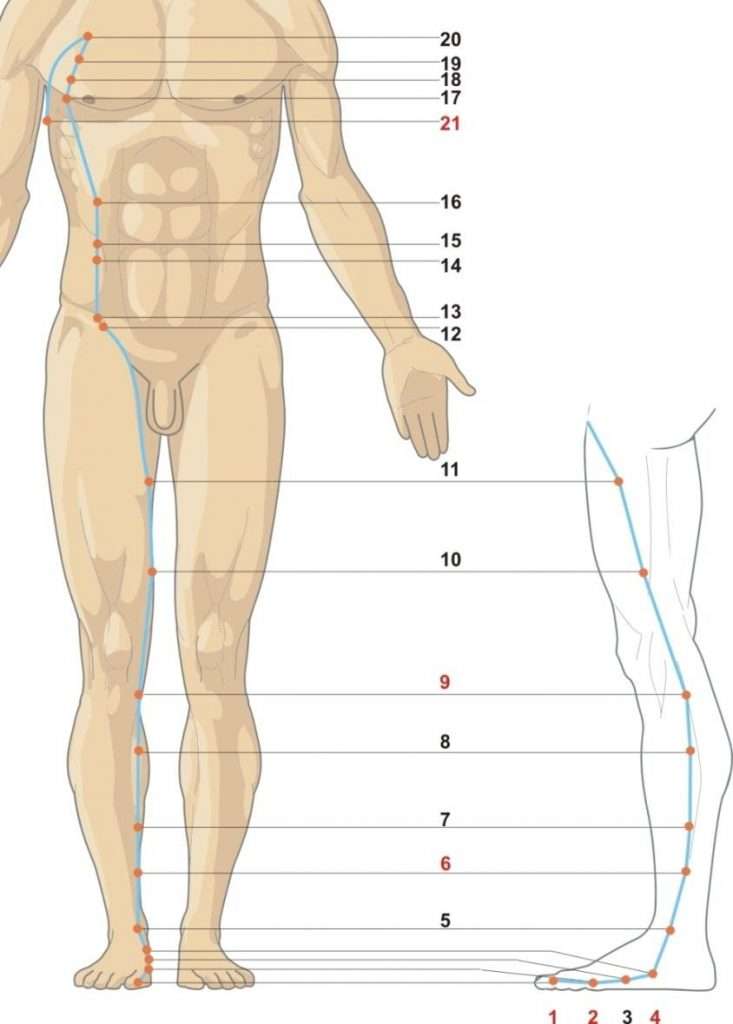
Stomach Meridian
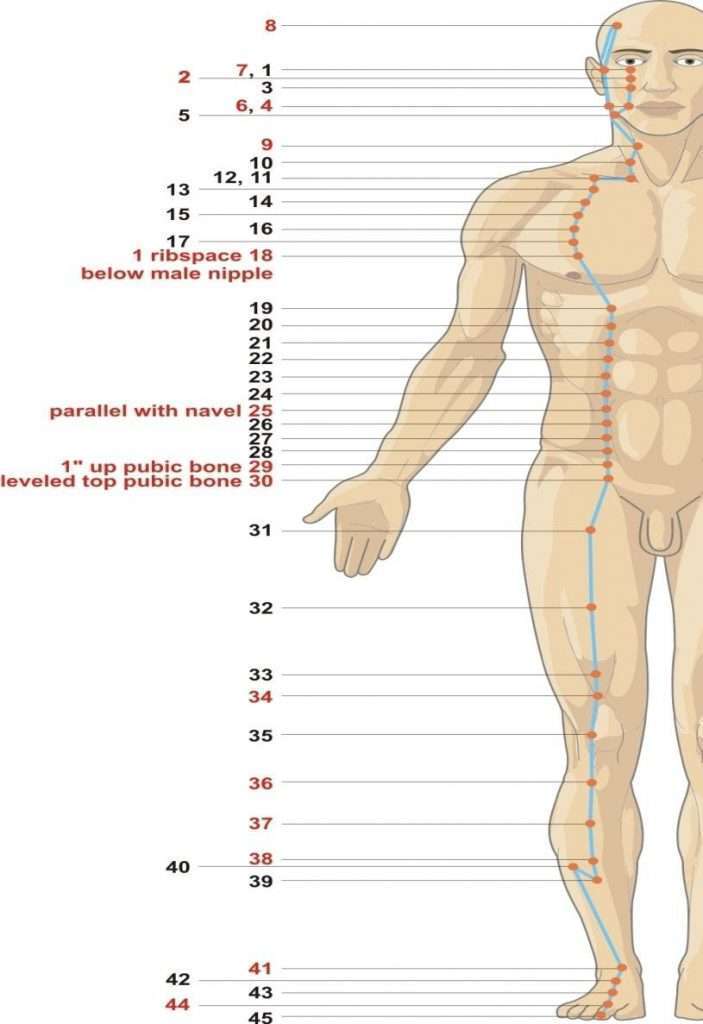
Heart Meridian

Small Intestine Meridian

Kidney Meridian
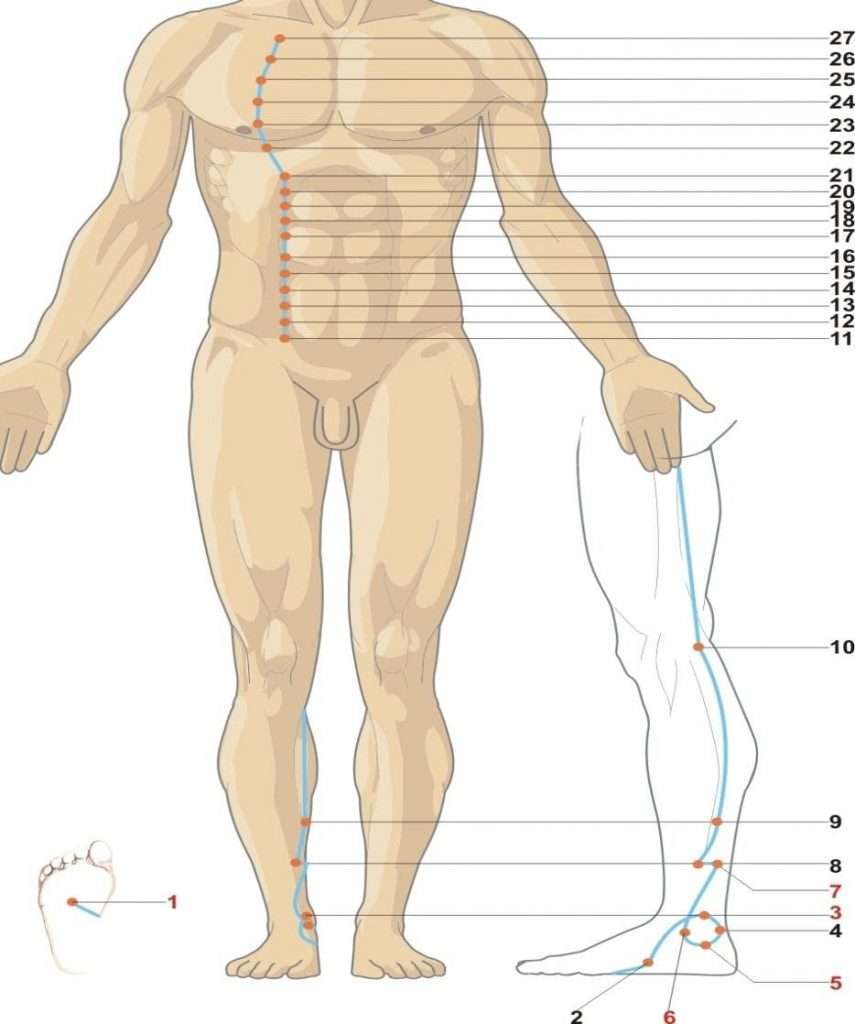
Urinery Bladder Meridian
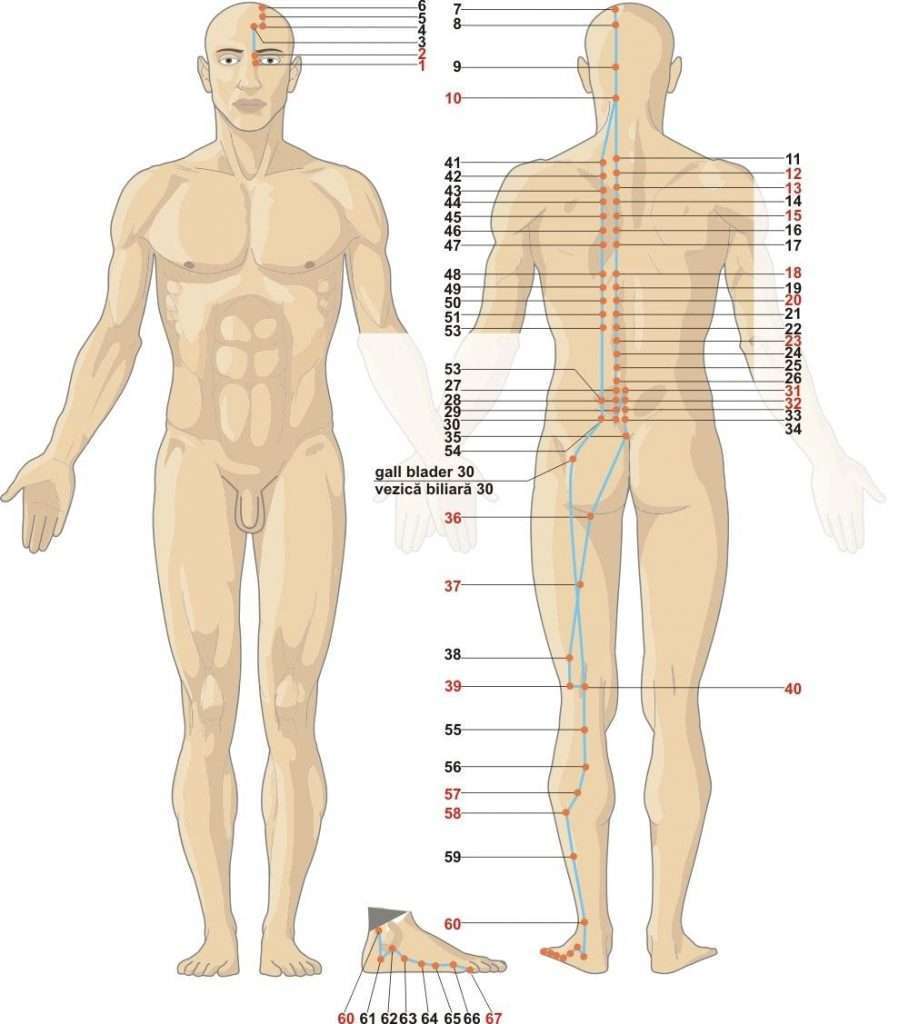
Pericardium Meridian
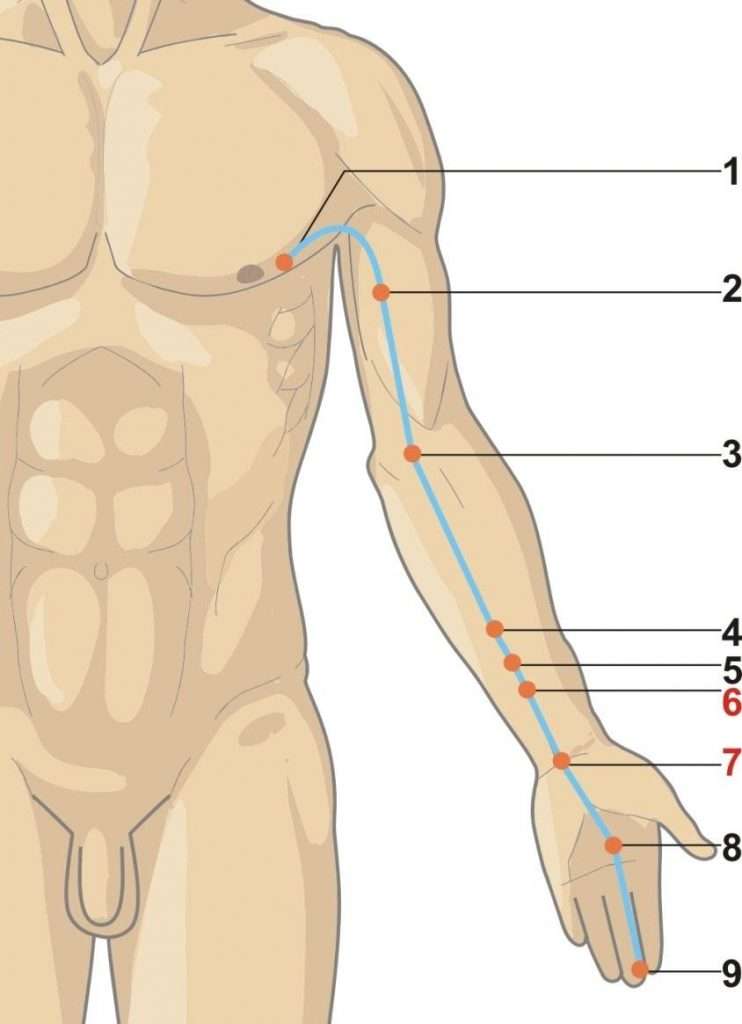
Tripper Wamer Meridian

Liver Meridian
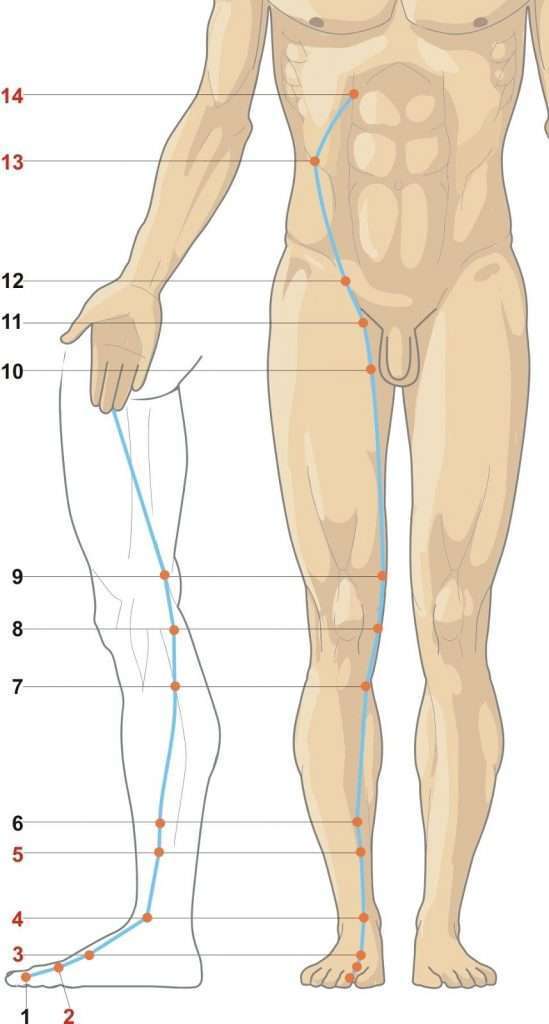
Gall Bladder Meridian

- Trauma & intensive care
- Aged Care
- Community Services
- Diagnosis & Investigation
- Medical & Surgical
- Mental Health
- Rehabitation
- Specialised Support Service

With access to
24 Hour
Emergency
Assistance
A small river named Duden flows by their place and supplies it with the necessary regavelialia. It is a paradise.
Service Recipient Says
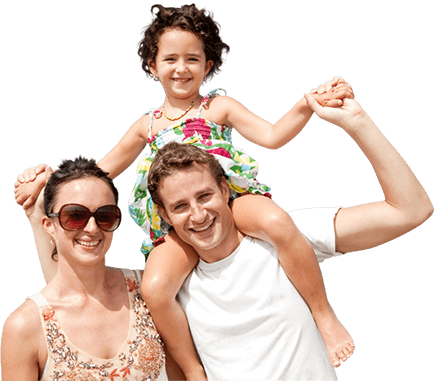
Oxmox advised her not to do so, because there were thousands of bad Commas, wild Question Marks and devious.
Kolis Muller NY Citizen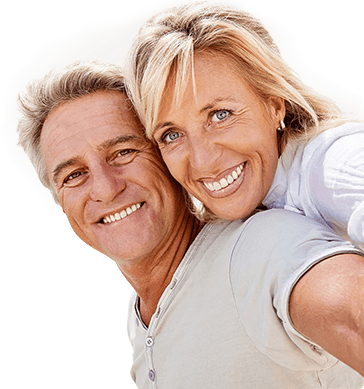
Oxmox advised her not to do so, because there were thousands of bad Commas, wild Question Marks and devious.
Kolis Muller NY Citizen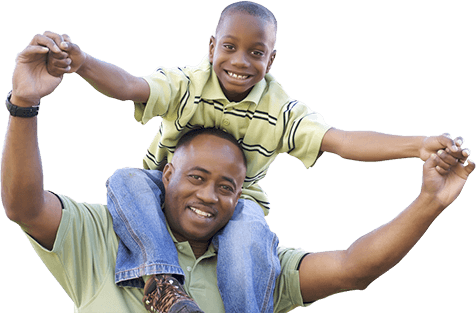






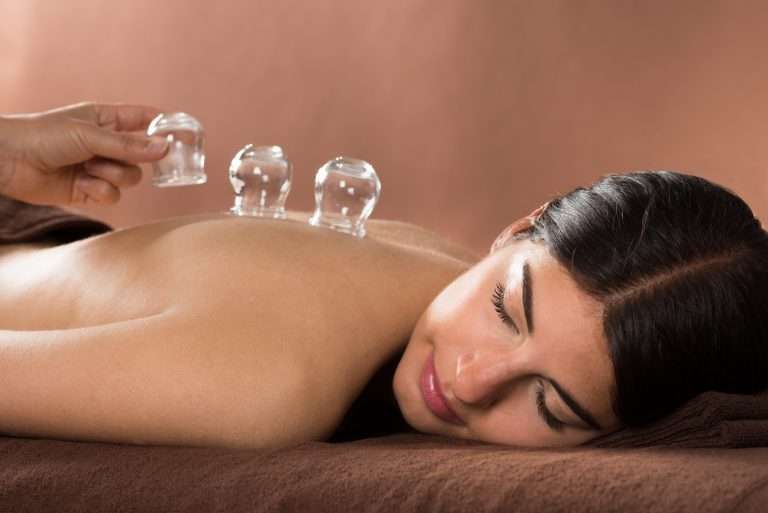
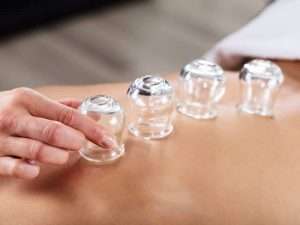










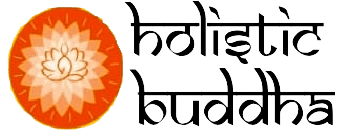

Oxmox advised her not to do so, because there were thousands of bad Commas, wild Question Marks and devious.
Kolis Muller NY Citizen